Clean air for our kids: Back to school 2022 - 2023
“Clean air for our kids” is a unique project jointly developed by Airscan and Belfius in 2021. The primary target of the project is to monitor and improve air quality in schools through real-time air quality data, relevant recommendations as well as close cooperation with direction and prevention advisors of schools.The project also aims to improve sustainability of the schools by finding the right balance between energy demand, health, and comfort.
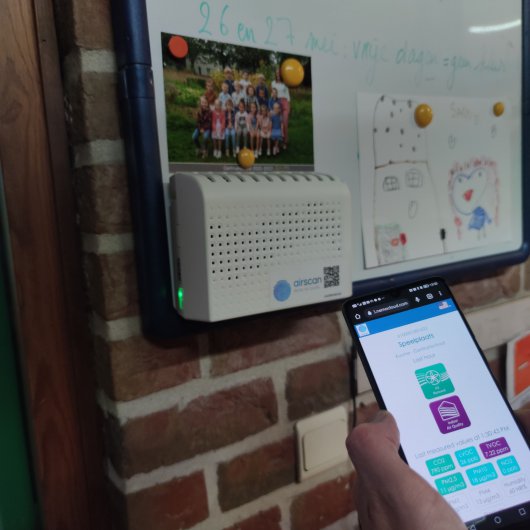
Main findings
Teaching with windows and doors "wide open"
Just before the start of the previous academic year, the Belgian government announced a recommendation to keep windows and doors open in the classrooms during class hours to minimise the risks of COVID-19 infection spread. This ventilation practice in combination with CO2 meters had a positive impact on overall indoor air quality in the classrooms. For instance, the average carbon dioxide concentration in most of the schools tested complied with the national threshold limit of 900 ppm. On the other hand, open windows resulted in the infiltration of fine dust particles and toxic gasses from the outdoors air into the classrooms.
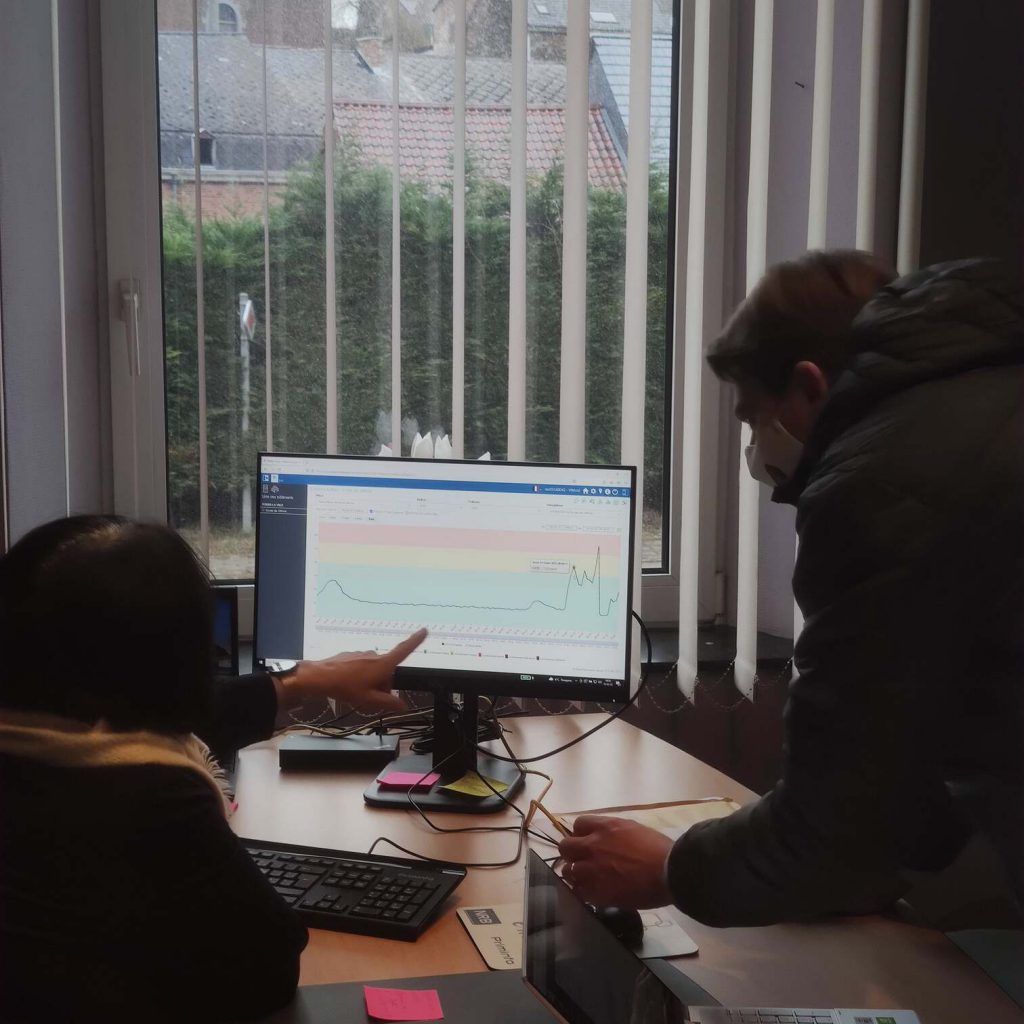
What about energy?
As mentioned in the previous paragraph, all the windows in Belgian schools were kept open to guarantee sufficient ventilation rates which affected comfort parameters and energy demand in schools. Starting from November, the average temperature in some of the classrooms tested dropped to 15 degrees and remained at such a low level until April. Moreover, the directions of the schools confirmed that the cost of heating dramatically increased in the new year. Thus, including the fact that energy prices in Europe sharply increased in the last 6 months and that open windows result in enormous energy losses, Airscan recommends focusing on a strategic ventilation approach: only when it’s necessary. This approach is based on a combination of CO2 meters and natural ventilation (open windows). By doing so it is possible to keep windows open only when it is necessary and consequently avoid heat losses. Moreover, it is essential to switch off the heating during the night/weekend/holidays.
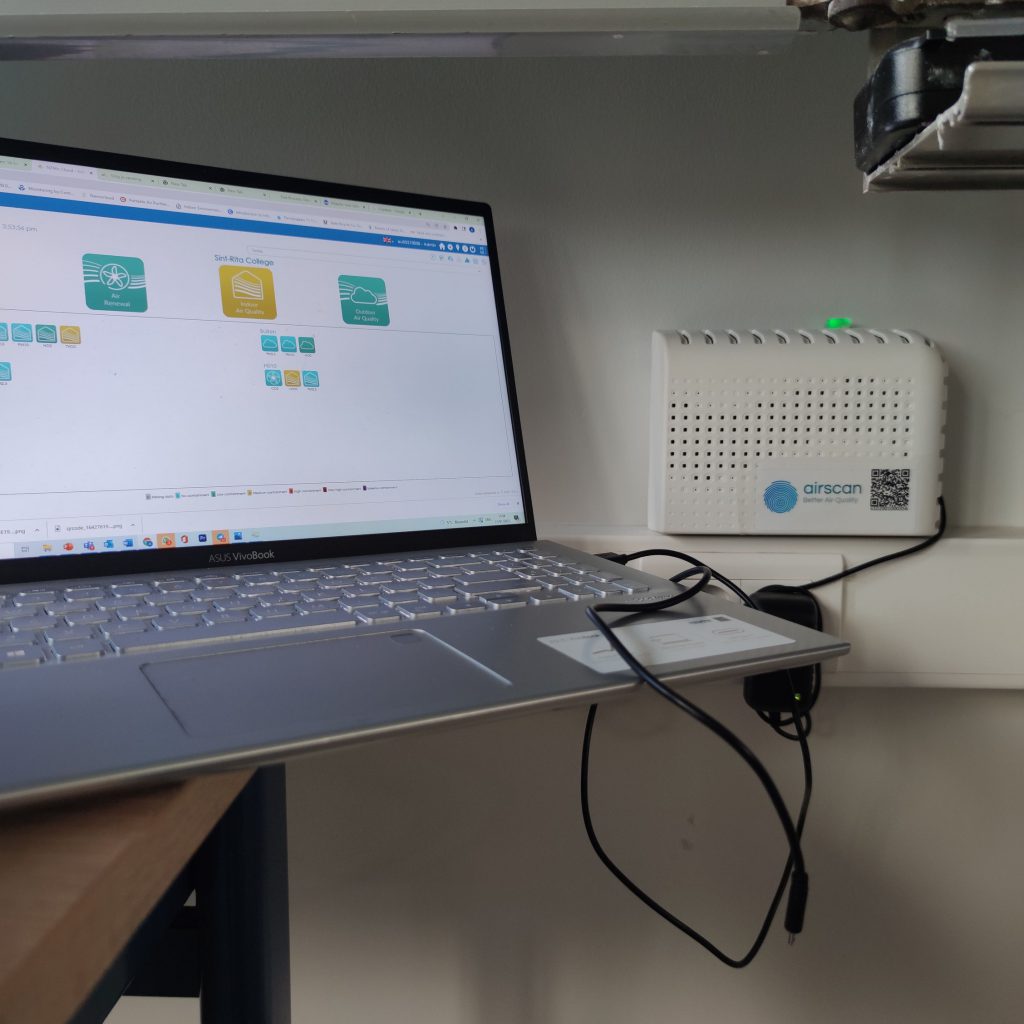
What affects air quality in schools the most?
The evaluation of the datasets showed several patterns that can be used to characterise general trends in schools’ air quality. First of all, kids’ age, as well as activities, are the main parameters that affect indoor air pollution levels. For instance, smaller children have more physical activities and move around the classrooms more frequently compared to the classrooms with bigger kids, where sedentary activities are dominant. Also, the concentration of particulate matter is higher in gyms compared to normal classrooms due to sports activities. Finally, the location of a school can also substantially affect indoor air quality due to continuous air exchange through open windows.
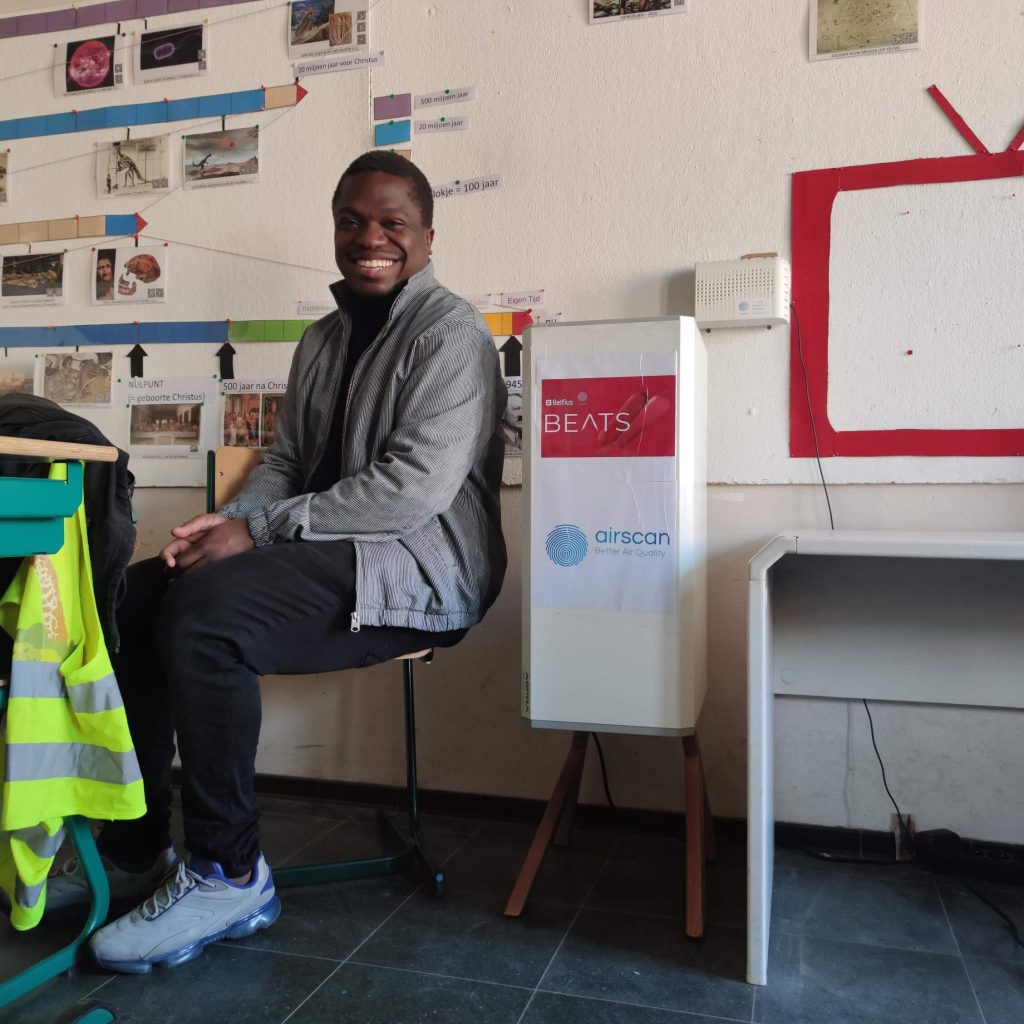
Clean air for our kids in numbers
- More than 2100 kids in different regions of Belgium benefit from the project;
- 35 schools were equipped with an air quality measurement network including indoor and outdoor sensors;
- 140 devices were delivered and installed in the schools;
- More than 500 recommendations were provided to teachers, direction and prevention advisors during the last academic year;
- More than 10000 notification alerts were sent to the schools during the last academic year;
- 50 air purification units were installed in the classrooms that had high particulate matter concentrations.
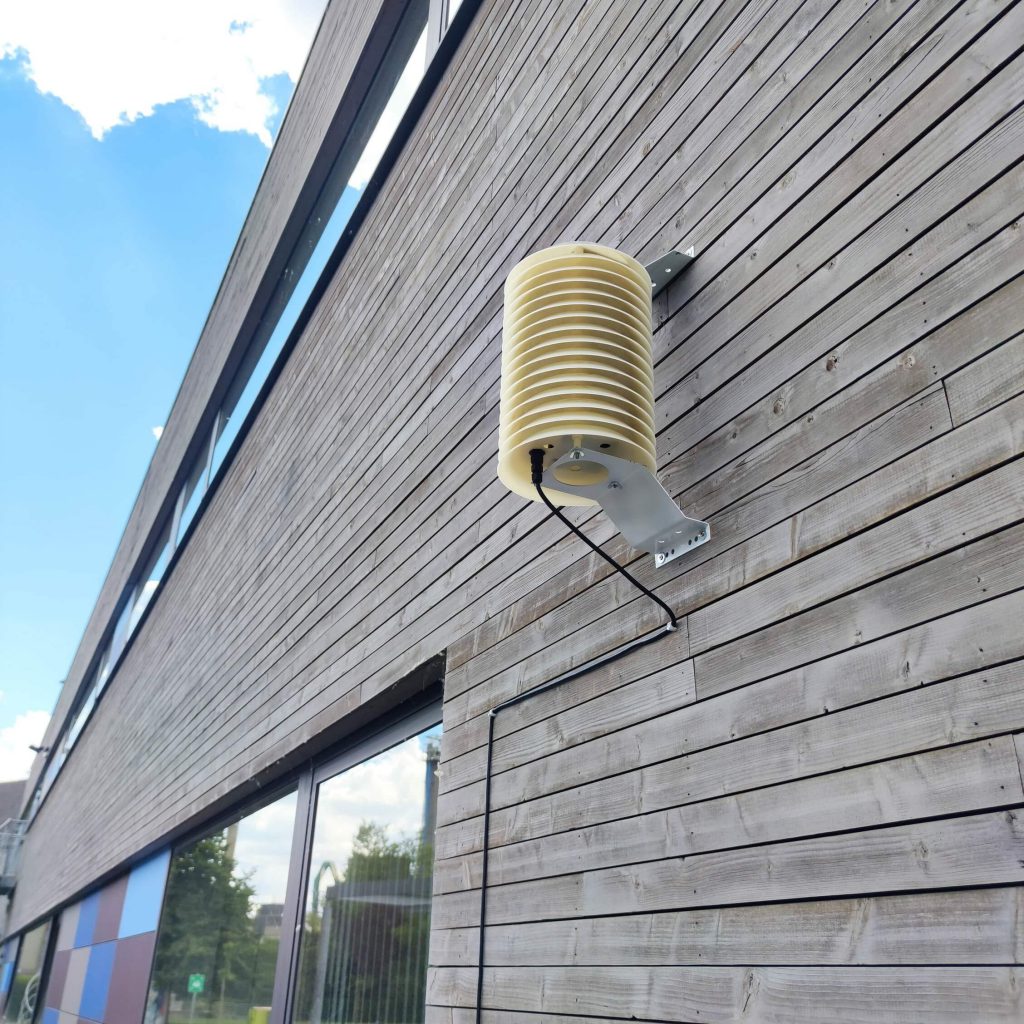
Image 5: Outdoor air quality monitoring station
What is the agenda for the coming academic year?
Airscan together with Belfius continues to work on the project and will deploy the project in 35 new schools in the coming months. With the dramatic increase of energy prices to project will also have an extra focus on energy savings.
Learned something? Feel free to share.

Ozone Levels In Brussels For The Last 10 Years
Did you know that the very air we breathe can be both a shield and a hazard? While ozone high up in the atmosphere protects us from the sun’s harmful rays, ground-level ozone can pose serious health risks. Airscan’s latest decade-long study reveals alarming trends in ozone levels across Brussels, with certain summer days seeing concentrations double the WHO’s recommended limit. Dive into our findings to understand how ozone impacts your environment and discover practical tips to protect yourself during high-pollution days..

Pure Cities: how temperature, wind and rain shape our air
This article explores the seasonal variations in air pollution and the influence of meteorological factors on pollutant concentrations, focusing on data from the “Pure Cities” project in Belgium. Analyzing pollutants like PM2.5, PM10, and NO2, the study highlights how temperature, humidity, wind speed, atmospheric pressure, and precipitation affect air quality throughout the year. Findings show that pollutant levels tend to rise during colder months due to increased residential heating and reduced dispersion. The article discusses the importance of addressing seasonal pollution through targeted strategies, such as enhancing public transport, promoting green spaces, and aligning regulations with WHO guidelines.

Beats for Planet: Key Findings of 3 Years of Air Quality Monitoring in Belgian Schools
3 Years of Beats for Planet: this is what we know about air quality in Belgian schools! If you have been following Airscan for a while, you will definitely know Beats for Planet. Airscan launched this project with Belfius three years ago with the aim of helping schools improve their air quality. In the framework of this project, Airscan has collected and analyzed data from 72 schools around Belgium for three indoor pollutants: carbon dioxide (CO2), particulate matter (PM) and volatile organic compounds (VOC). This is what we found..




